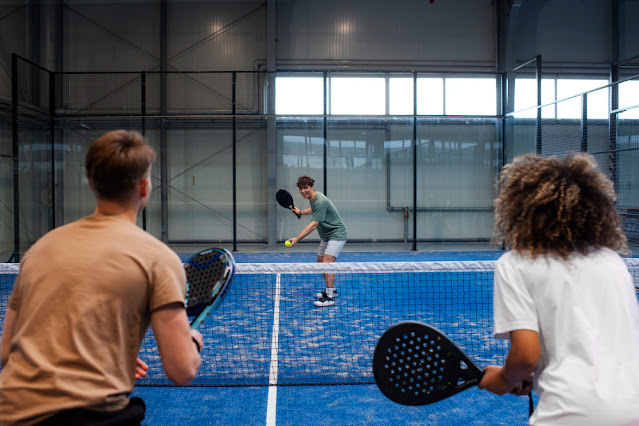Pickleball Unveiled: Rules, Equipment, and Strategy
Pickleball, a sport that has been rapidly gaining
popularity in recent years, is a unique and engaging paddle sport that combines
elements of tennis, badminton, and table tennis. This article, titled
"Pickleball Unveiled: Rules, Equipment, and Strategy," delves into
the intricacies of the game, providing a comprehensive overview of its rules,
essential equipment, and key strategies.
Rules of Pickleball:
Pickleball
is typically played on a rectangular court with dimensions similar to those of
a doubles badminton court. The game can be played in singles or doubles format.
The objective of the game is to score points by hitting a lightweight ball,
similar to a whiffle ball, over the net and into the opponent's side of the
court. A unique feature of pickleball is the "kitchen" or
"non-volley zone," a designated area close to the net where players
are not allowed to hit the ball in the air, promoting strategic and precise
placement of shots. The serving, scoring, and rotation rules are designed to
ensure fairness and competitive balance.
Essential Equipment:
Pickleball requires minimal equipment, making it
accessible to people of all ages and fitness levels. Players use solid paddles
made of materials like wood, composite, or graphite. The ball used is
perforated, allowing it to travel with controlled speed and bounce. Proper
footwear and comfortable clothing that allows easy movement are recommended.
The court surface can vary, but it's typically made of asphalt, concrete, or
composite materials.
Strategy in Pickleball:
While pickleball might seem straightforward, it's a sport
that demands a combination of skill, finesse, and strategy. The game's
fast-paced nature means players must quickly adapt to changing situations. Here
are some key strategic elements to consider:
Placement and Control: Due to the "kitchen"
rule, players often engage in a delicate dance at the net, aiming to place
shots in precise areas that make it difficult for opponents to respond
effectively.
Dinking: The dink is a soft shot that barely clears the
net and lands in the non-volley zone. Mastering the dink can put pressure on
opponents and set up favorable positions on the court.
Third-Shot Drop: After the serve and return, the third shot is crucial. A
well-executed drop shot can prevent opponents from launching aggressive
volleys, allowing the serving team to regain control of the rally.
Communication and Movement: In doubles play, effective communication between partners
and coordinated movement on the court are essential. Players need to cover the
court strategically to exploit openings and minimize vulnerabilities.
Adapting to Opponents: Analyzing opponents' strengths and weaknesses and
adjusting your strategy accordingly can provide a significant advantage. For
instance, identifying a weak backhand and targeting it with strategic shots can
disrupt opponents' rhythm.
In conclusion, "Pickleball Unveiled: Rules,
Equipment, and Strategy" sheds light on the captivating world of
pickleball, a sport that's capturing the hearts of players worldwide. Its blend
of accessibility, camaraderie, and competitive spirit makes it suitable for
players of all backgrounds. By understanding the rules, embracing the essential
equipment, and mastering strategic gameplay, anyone can enjoy the exhilarating
experience of pickleball on the court. So grab a paddle, rally with friends,
and explore the dynamic world of pickleball – a game that combines skill,
teamwork, and a whole lot of fun.
.jpg)

.jpg)

Comments
Post a Comment